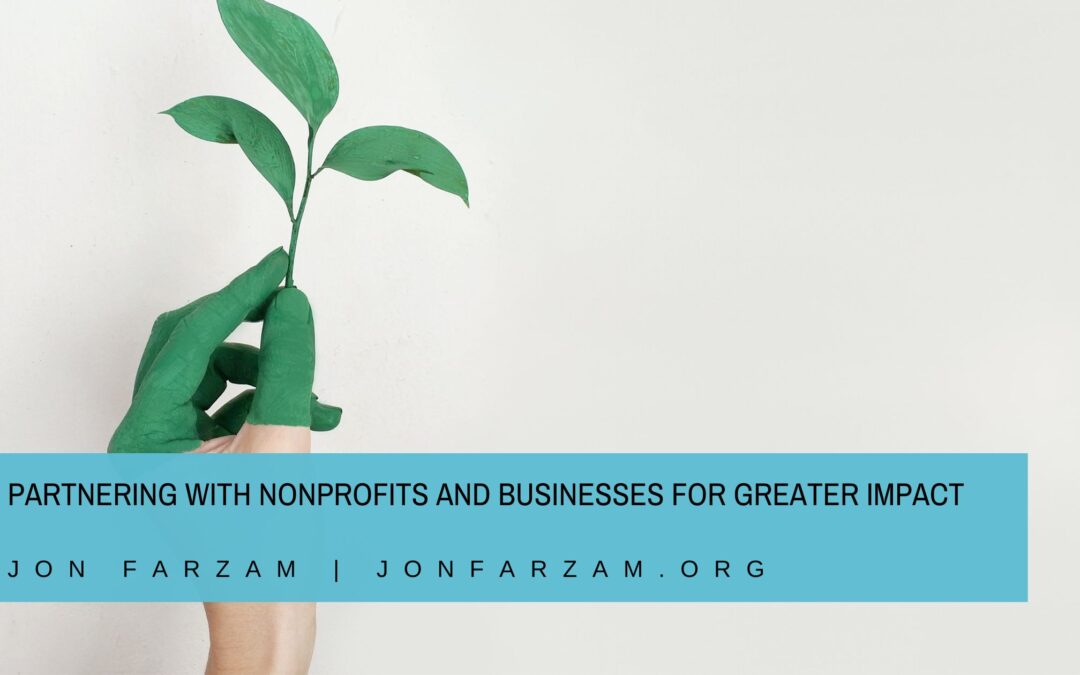The power of collaboration cannot be overstated. Nonprofit organizations and businesses, each armed with their unique strengths and resources, possess the potential to create a significant and lasting impact when they come together in partnership. These synergistic alliances are a win-win for the organizations involved, the communities they serve, and the causes they champion.
The Rise of Purpose-Driven Partnerships
There has been a remarkable shift in how businesses approach their operations in recent years. Corporate social responsibility (CSR) is no longer an afterthought; it’s a core part of many business strategies. Similarly, nonprofits recognize the need for sustainable funding models and innovative approaches to address complex challenges. This convergence of objectives has paved the way for purpose-driven partnerships that transcend traditional boundaries.
By collaborating with nonprofits, businesses can align their missions with social or environmental causes, thereby enhancing their brand reputation and customer loyalty. On the other hand, nonprofits gain access to resources, expertise, and networks that can accelerate their impact and extend their reach. This mutual exchange of strengths sets the stage for a new era of collaborative problem-solving.
Leveraging Complementary Resources
One of the most compelling reasons for nonprofits and businesses to partner is the leveraging of complementary resources. While businesses often boast financial capital, marketing prowess, and technological innovation, nonprofits possess on-the-ground insights, community relationships, and a deep understanding of societal needs. Combined, these assets can lead to creative and effective solutions that might not have been possible independently.
Consider a scenario where a tech company collaborates with a nonprofit focused on education. The tech company can provide funding for digital learning tools, mentorship programs, and infrastructure development. In return, the nonprofit can offer valuable insights into the needs of underserved communities and help tailor technological solutions to suit local contexts. The result is a powerful blend of resources that creates a holistic and sustainable impact.
Amplifying Awareness and Mobilizing Action
Partnerships between nonprofits and businesses have the potential to amplify awareness and mobilize action on critical issues. Businesses often have vast marketing and communication resources that can spotlight important causes, reaching audiences that nonprofits might struggle to engage. Through joint campaigns, events, and initiatives, both parties can draw attention to pressing challenges and encourage individuals to get involved.
Furthermore, collaborations can encourage employee engagement and volunteerism. When businesses support causes that align with their employees’ values, it fosters a sense of purpose and pride among the workforce. Many companies offer volunteer leave or organize team-building activities that involve contributing to nonprofit projects. This benefits the nonprofit and enhances employee morale and loyalty, ultimately contributing to a positive corporate culture.
Navigating Challenges and Building Sustainable Partnerships
While the potential benefits of nonprofit-business partnerships are undeniable, it’s important to acknowledge and navigate potential challenges. Differences in organizational culture, priorities, and timelines can sometimes lead to friction. Effective communication, transparency, and a shared commitment to the partnership’s goals are crucial for overcoming these hurdles.
To build sustainable partnerships, both parties must be willing to invest time and effort into relationship-building. Clear agreements outlining roles, responsibilities, and expected outcomes can help prevent misunderstandings. Regular check-ins and evaluations ensure the partnership remains on track and adapts to changing circumstances.
Case in Point: Sustainable Fashion Collaboration
A notable example of a successful nonprofit-business partnership is the collaboration between a fashion retailer and an environmental conservation organization. The fashion retailer is committed to reducing its carbon footprint and promoting sustainable practices within the industry. Partnering with the conservation organization, they launched a campaign to raise awareness about the environmental impact of fast fashion.
The nonprofit provided expert knowledge and data on the fashion industry’s ecological footprint, while the retailer offered its platform and marketing channels. The campaign included educational videos, virtual workshops, and a clothing drive to encourage consumers to donate or recycle old garments. The partnership educated the public about sustainable fashion and inspired other companies to follow suit.
The Road Ahead
As we move forward into an era characterized by interconnectedness and shared responsibility, the potential for nonprofit-business partnerships to drive positive change is immense. By leveraging their respective strengths, these collaborations have the power to address complex challenges, amplify impact, and create a better future for all. Whether it’s promoting social justice, environmental sustainability, or community development, the synergy between nonprofits and businesses is a force to be reckoned with – a force that can reshape industries, change lives, and leave an indelible mark on the world.

